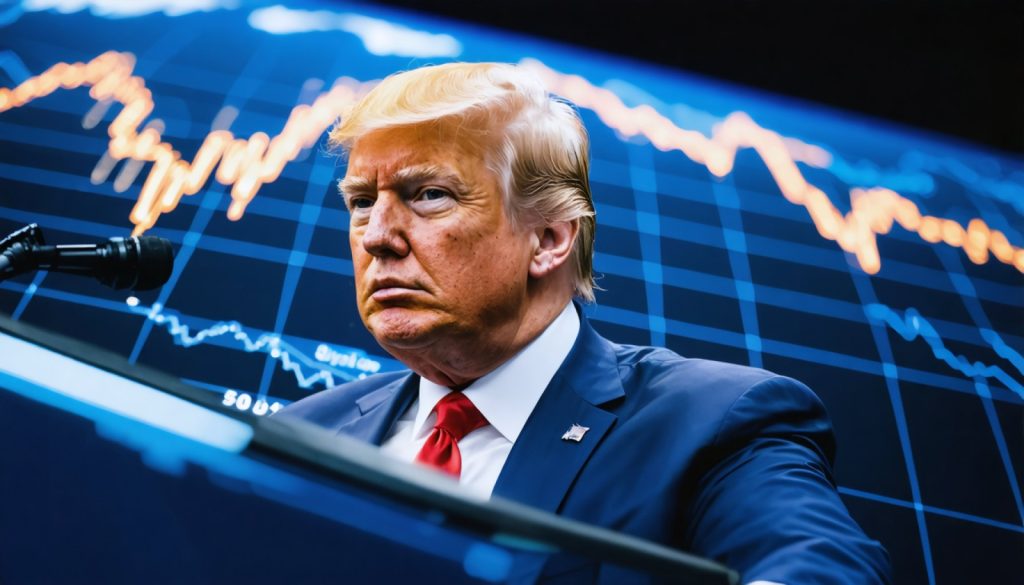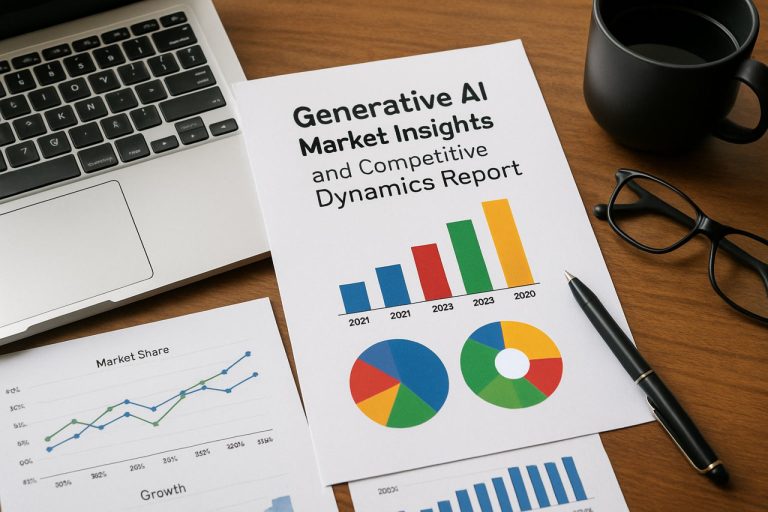
- President Trump announced tariffs on imports from the UK, Israel, and other countries, impacting global markets.
- Bitcoin, viewed as digital gold, dropped to $82,143 amid trade tensions, reflecting market volatility.
- Gold prices surged to $3,152 per ounce, reaffirming its status as a safe-haven asset during financial uncertainty.
- The tariffs aim to protect U.S. industry but elicit mixed reactions due to global economic dependencies.
- Bitcoin faces skepticism in uncertain times, showing increased correlation with U.S. equities.
- The rise of gold illustrates investors’ shift to safety amid potential economic turmoil.
- The dynamic between traditional safe assets and digital currencies highlights a market balancing tradition and innovation.
- Investors ponder whether to rely on gold or embrace digital assets for financial refuge in changing times.
The financial world is abuzz after United States President Donald Trump declared tariffs on imports from the United Kingdom, Israel, and a slew of other countries. This bold move has sent tremors through global markets, shaking up investments and reshuffling the economic playing field.
In a raucous announcement labeled a “Declaration of Economic Independence,” the President unveiled tariffs that left investors grappling to make sense of a chaotic landscape. Bitcoin, once hailed as a digital counterpart to gold, saw a slide, dipping to $82,143 after hitting a recent high of $87,400. The digital currency’s descent underscores the jittery response of risk assets amid escalating trade tensions.
Contrasting sharply is the meteoric rise of gold, with prices reaching an unprecedented peak of $3,152 per ounce—a striking 10% leap since tariffs were first signaled in early March. As global turmoil brews, investors traditionally run to the comforting gleam of gold, affirming its role as a bastion against financial unpredictability.
The tariffs, which span a broad spectrum of nations and industries, are stirring mixed reactions. While the President insists these measures are necessary to protect U.S. industry and reset international trade, markets react with volatility, reflecting the complexity of a global economy interwoven with countless dependencies.
Bitcoin’s current plunge highlights a shift in sentiment where digital currencies, for all their promise, may still be viewed with suspicion during times of heightened uncertainty. This skepticism is mirrored in Bitcoin’s growing correlation with U.S. equities, especially in light of increased exposure through American firms deeply invested in cryptocurrency.
Meanwhile, gold’s enduring allure as a stable asset is burnished anew. Its rally epitomizes the investor flight to safety, a beacon for those wary of the potential storm clouds gathering on the economic horizon.
The interplay between these commodities, alongside Trump’s bold economic maneuvers, paints a vivid picture of a global market caught between tradition and innovation. The next chapters in this unfolding drama will determine if Bitcoin can rise to its reputed stature as digital gold or remain tethered to the whims of the traditional stock market.
As the dust settles, a crucial question looms: in an era defined by rapid changes and uncertainties, will investors cling to the age-old security of gold, or will digital assets finally capture the mantle of modern-day financial refuge? The stakes have never been higher, and the watchful eyes of the world await the answers.
Trump’s Tariffs Shake Global Markets: What You Need to Know
The imposition of tariffs by U.S. President Donald Trump on imports from countries like the United Kingdom and Israel has sent shockwaves through global markets. This move, which the President has dubbed a “Declaration of Economic Independence,” has added layers of complexity to the current economic landscape.
Key Insights from the Tariff Impact
Impact on Global Markets:
– Gold’s Surge: As reported, gold prices have climbed to an unprecedented $3,152 per ounce. Gold’s value often rises during times of economic turmoil as investors seek a safe haven. The metal’s allure is linked to its historical reputation as a stable store of value during uncertainty.
– Bitcoin’s Volatility: Bitcoin’s recent fluctuation underscores the cryptocurrency’s volatility in turbulent times. Despite earlier optimism about its status as “digital gold,” the recent dip to $82,143 highlights its correlation with riskier assets.
How Tariffs Affect Economies:
– Industry Protection vs. Global Trade Cooperation: While tariffs aim to protect domestic industries by making imported goods more expensive, they can also lead to trade wars and strained relations with international partners. Economies meshed in a complex web of global supply chains face disruptions, affecting businesses and consumers alike.
– U.S. Economy & Inflation Risks: Higher tariffs can lead to increased prices for imported goods, potentially contributing to inflation. This factor may impact consumer spending, which is a significant driver of the U.S. economy.
What Investors Should Consider
Pros & Cons of Gold vs. Bitcoin:
– Gold: Pros include its stability and historical performance during downturns. Cons include lack of yield and the need for physical storage.
– Bitcoin: Pros involve potential for high returns and ease of digital transactions. Cons highlight its volatility and regulatory risks.
Actionable Investment Tips:
– Diversify your portfolio to spread risk across multiple asset classes.
– Consider increasing exposure to gold during periods of uncertainty.
– Keep abreast of cryptocurrency market trends and regulatory changes if investing in digital assets.
Real-World Use Cases:
– Businesses: Companies importing goods from tariff-affected countries might explore alternative suppliers or local production.
– Consumers: Expected price increases might lead shoppers to adjust spending habits or seek domestic alternatives.
Industry Trends and Future Predictions
– Tech Advancements in Finance: The role of cryptocurrencies continues to evolve, with increasing institutional interest despite current volatility. Blockchain technology is gaining traction in sectors like supply chain management and finance.
– Sustainability and Economic Policies: The economic impact of these policies will push businesses toward more sustainable and locally-focused practices to mitigate risks associated with international trade disruptions.
Controversies and Limitations
– Trade Wars: Critics argue that tariffs can trigger retaliatory measures, leading to trade wars that harm global economic growth.
– Market Uncertainty: While some praise the protective measures, others worry about long-term impacts on international trade relations and economic stability.
Conclusion: Navigating a Complex Economic Terrain
In response to these changes, it’s crucial to stay informed and adapt strategies accordingly. While the debate over digital versus traditional assets continues, the immediate needs include understanding how tariffs could affect your finances and looking ahead to future trends.
For further reading, visit credible financial sources such as Wall Street Journal or industry expert opinions on economic policies at Bloomberg.
By staying proactive and informed, investors can better navigate the complexities of this rapidly changing economic environment.



